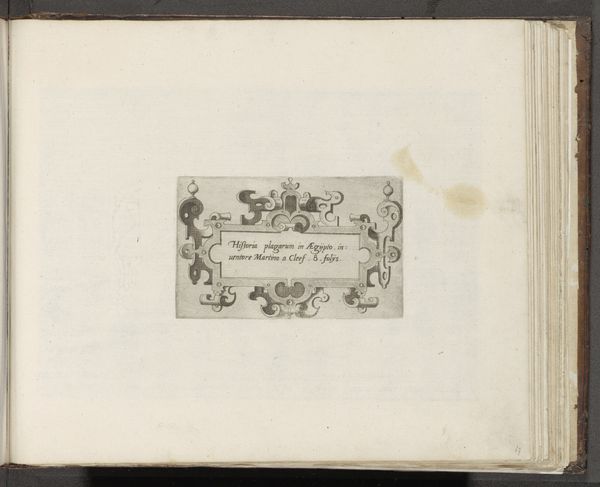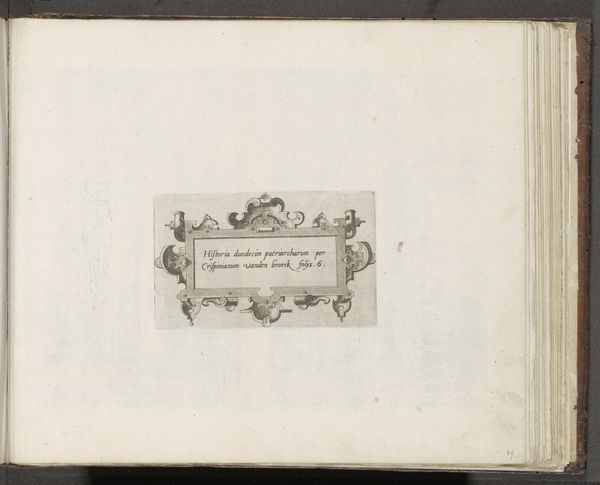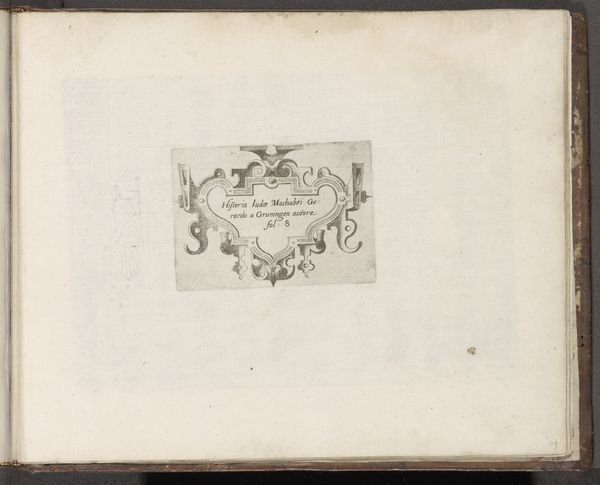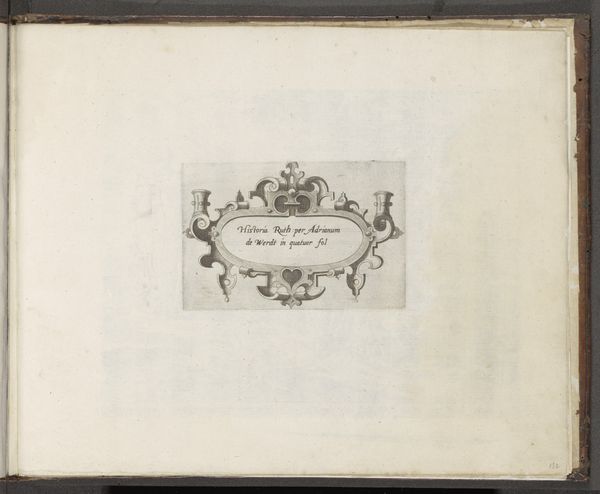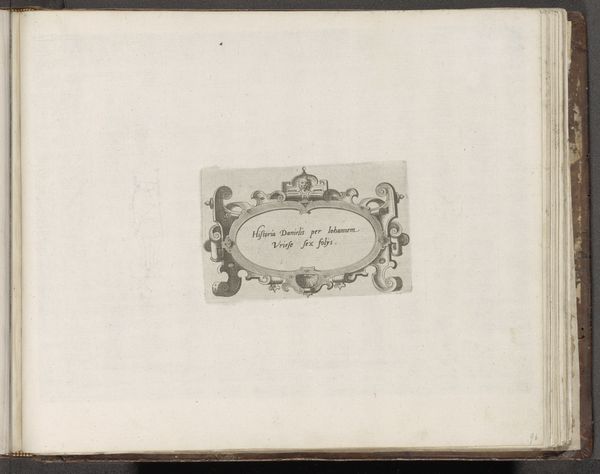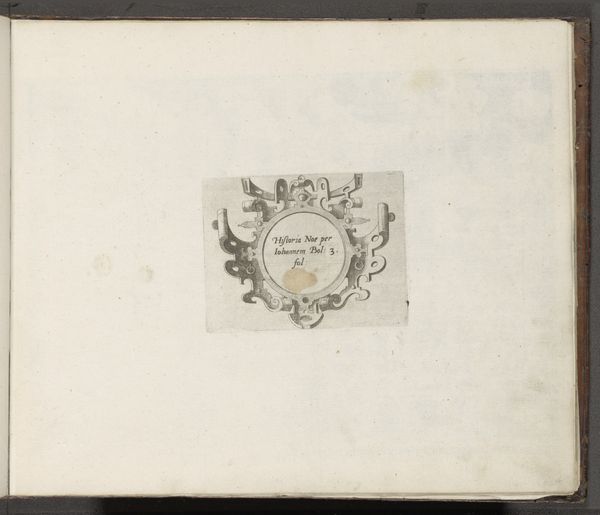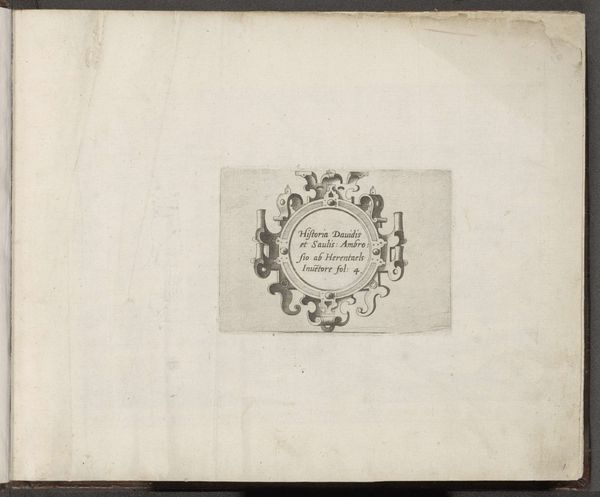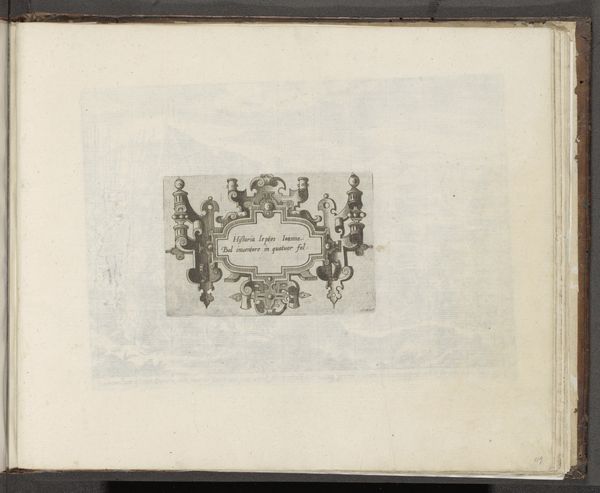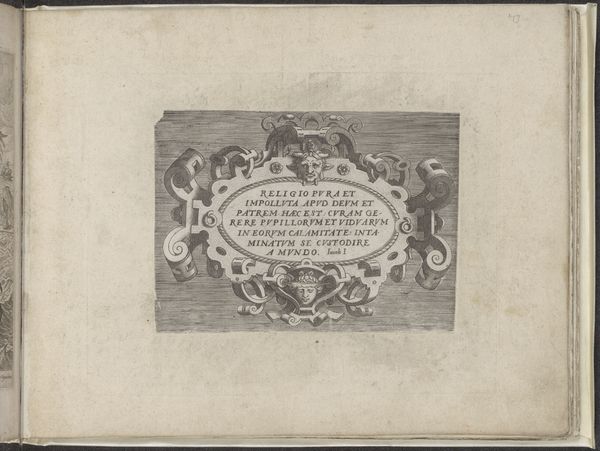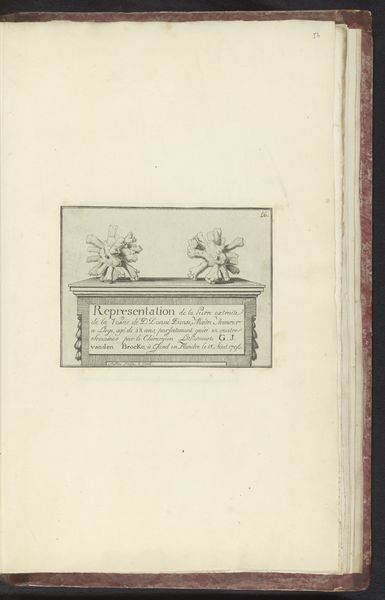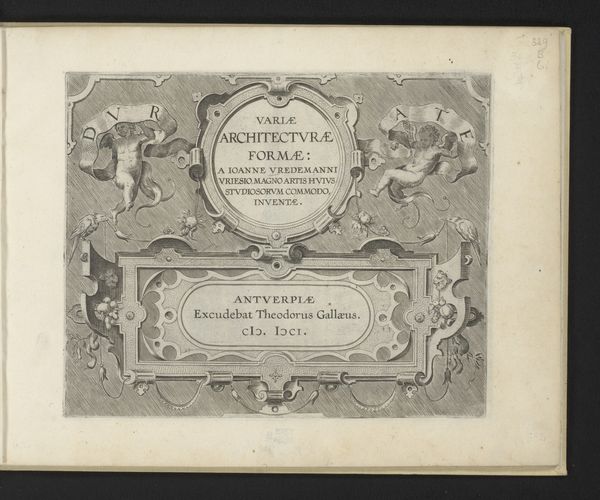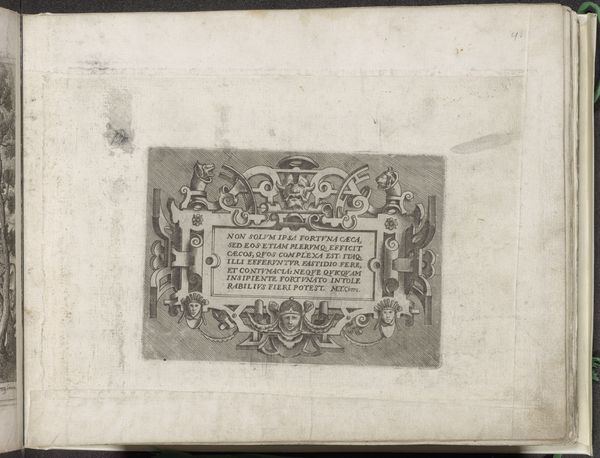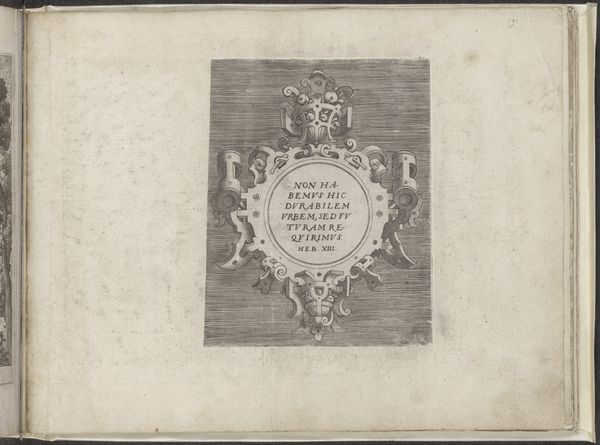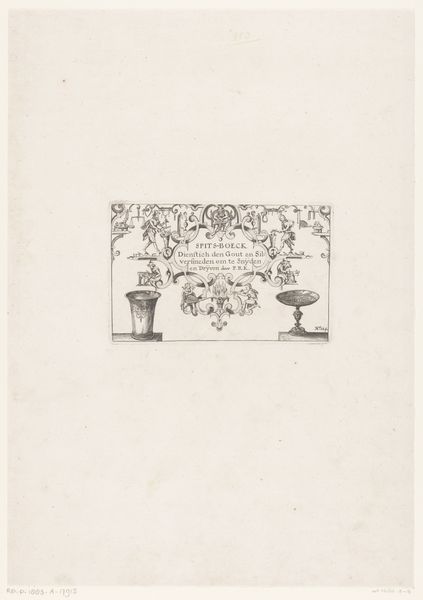
drawing, print, paper, engraving
#
drawing
# print
#
paper
#
11_renaissance
#
engraving
Dimensions: height 84 mm, width 136 mm
Copyright: Rijks Museum: Open Domain
Curator: Here we have an engraving on paper from 1579. It’s titled “Cartouche met rolwerk,” which translates to “Cartouche with Scrollwork.” The work resides here at the Rijksmuseum, and it is currently attributed to an anonymous artist. Editor: My initial reaction is… restrained opulence. The cartouche itself feels contained, almost claustrophobic, but those scrolling elements promise expansiveness. It’s delicate but weighty. Curator: Indeed. Cartouches like this, especially in the late 16th century, served important social and political functions. They framed text – dedication, information. They weren't just decoration; they directed how the content within the frame should be viewed and understood, creating a space of legitimization, think of how they often appear on maps or above entrances to buildings. Editor: It feels like a negotiation, then: the artist or patron wants to declare something, make a statement, but does so with this very ornate, almost apologetic frame around it. There's a push-pull between asserting power and couching it in elaborate decoration. Curator: Absolutely. Also, consider where something like this might be placed— perhaps bound into a book. These images were circulated, impacting how information and authority were communicated. Engravings like this democratized imagery. What were previously unique or exclusive visual devices could now be multiplied and dispersed more freely throughout society. Editor: And the decision to frame "History Holofernes" so particularly…that speaks to power and gender too. Framing what exactly should one do with these depictions of women in the bible or stories of Holofernes in public view? Were these cartouches really able to separate or even control that history as well as the perception of their meaning? The question becomes who and for what ends is this art speaking? Curator: Well said. In short, while seemingly a decorative object, "Cartouche met rolwerk" exemplifies how Renaissance engravings actively participated in structuring meaning and shaping social perception, revealing insights into early modes of communication and its constraints. Editor: Ultimately it reveals how complex these systems always are. What began for the purpose of legitimization could easily carry subversion just below the surface. Framing Holofernes may have empowered the narrative but perhaps unintentionally gave the women in this depiction much more agency. It's always an active reading.
Comments
No comments
Be the first to comment and join the conversation on the ultimate creative platform.
